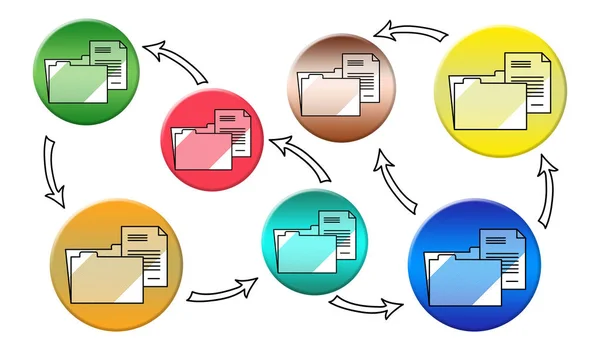Executive Overview
In enterprise environments characterized by scale, complexity, and regulatory oversight, manual document creation introduces inefficiencies, inconsistencies, and operational risk. As digital transformation accelerates across sectors, document generation software has emerged as a strategic infrastructure layer—enabling organizations to automate high-volume document workflows while ensuring compliance, data accuracy, and brand consistency.
From legal departments and finance teams to customer service and sales operations, enterprises are leveraging document automation tools to drive measurable improvements in operational agility, process governance, and user productivity.
The Enterprise Case for Document Automation
1. Standardization at Scale
Enterprises operate across departments, regions, and business units—each with specific documentation requirements. Automated document generation enforces global standards through centralized templates and rule-based logic, eliminating variations and reducing legal exposure.
2. Integrated Data Governance
Advanced platforms pull structured data from CRMs, ERPs, and HRIS systems to auto-populate documents—ensuring data accuracy and maintaining a single source of truth across enterprise workflows.
3. Enhanced Compliance and Auditability
For industries governed by strict regulations (e.g., financial services, healthcare, legal), automation ensures that language, clauses, and disclosures remain consistent and traceable—supporting internal audits and external regulatory reviews.
4. Enterprise Agility and Throughput
Accelerated document production reduces time-to-value across processes such as contract lifecycle management, proposal generation, onboarding, and financial reporting—enhancing enterprise responsiveness.
Platform Capabilities Aligned to Enterprise Needs
| Capability | Strategic Enterprise Benefit |
| Rule-Based Template Management | Supports complex, compliant document assembly across jurisdictions |
| Workflow Automation & Approvals | Reduces cycle times and manual intervention for reviews and sign-offs |
| Integration with Enterprise Systems | Syncs with Salesforce, SAP, Microsoft, and other core platforms |
| Multi-Language and Localization Support | Enables global consistency while accommodating regional needs |
| Role-Based Access and Audit Trails | Enhances security, accountability, and traceability at scale |
Enterprise-Grade Solutions in Focus
Docupilot
A versatile platform offering API-driven, template-based automation with deep support for custom data inputs and advanced formatting logic. Ideal for operations requiring structured document flows (e.g., procurement, compliance, customer onboarding).
Perfect Doc Studio
Designed for scalability, this platform supports multilingual document generation and integrates with enterprise software like Salesforce and Microsoft 365. Its no-code interface empowers business teams to configure automation without relying on IT resources.
Mitratech HotDocs
Built for legal-intensive environments, HotDocs offers a powerful rules engine for complex document assembly. It is widely adopted in law firms, financial institutions, and government agencies for high-risk, high-volume documentation.
Macabacus
Trusted by financial services firms, Macabacus integrates with Excel to automate pitch books, financial models, and branded reports—ensuring accuracy and presentation consistency in client-facing deliverables.
Formstack Suite
Combines forms, documents, and eSignatures into a cohesive automation platform. It enables end-to-end data capture and document workflows—ideal for HR, compliance, and administrative functions.
Droplet
Supports digital forms, eSignatures, and approval chains in a lightweight, agile format—suitable for mid-sized enterprises and departments seeking fast deployment and ease of use.
Strategic Implementation Considerations
To maximize enterprise-wide impact, CIOs and transformation leaders should assess the following dimensions:
- Scalability: Can the platform handle thousands of users, documents, and use cases without degradation?
- Governance Framework: Are there controls for template ownership, versioning, and change approval?
- IT Alignment: Is the solution cloud-native, API-compatible, and compliant with security architecture?
- Change Management: Does the rollout plan include business enablement, training, and support models?
- Cost-Efficiency: How does licensing scale with usage, and is ROI measurable across functions?
Conclusion: Document Automation as a Pillar of Enterprise Transformation
Document generation software is no longer a peripheral tool—it is a strategic enabler of digital execution at scale. Enterprises that invest in robust, integrated, and scalable document automation capabilities will gain critical advantages in operational consistency, risk reduction, and time-to-market performance.
As digital transformation matures, automating core document workflows will become foundational to enterprise agility, especially for those seeking to optimize processes, empower global teams, and maintain governance in increasingly complex environments.



